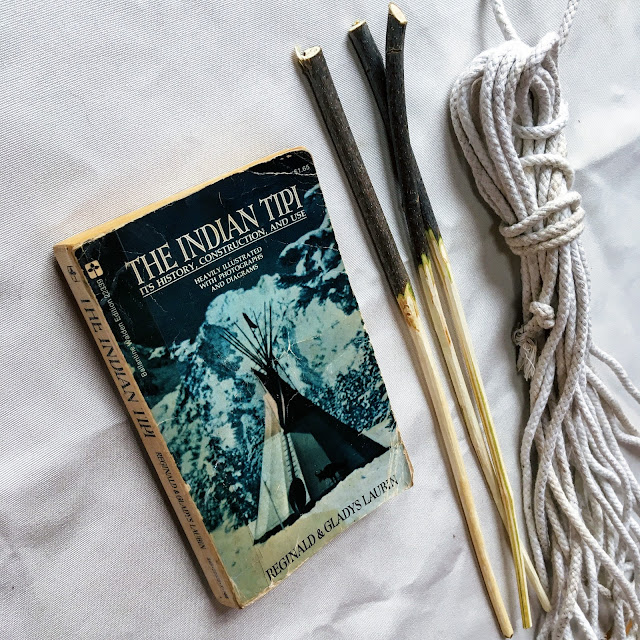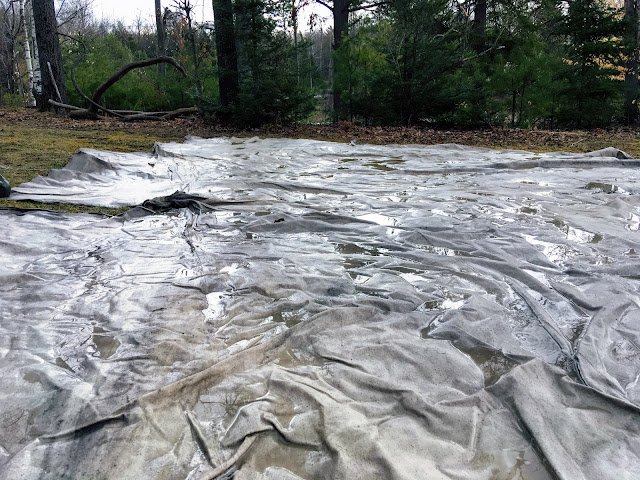The Michigan Tipi Begins [erecting our summer home]
A new chapter in the Journeying Wayfarer's collection has begun.
For two solid weeks, we have been sweating, using new muscle groups, getting dirty, greasy, soapy, pricked with needles, cut open with sticks, sucked by ticks, sanding, learning about well pumps, electricity, tractors, clearing a barn, navigating differing opinions, and on and on. All part of setting the stage for several facets that this summer will contain for the kids and I in Michigan while Corey travels the country non-stop with Defy Athletix.
Here's a behind the scenes of one of the current works in progress; our home for the summer!
When no boots are to be found...
Though it looks attractive, this is not yet a home. (Pic from our first attempt before taking it into the woods).
For two solid weeks, we have been sweating, using new muscle groups, getting dirty, greasy, soapy, pricked with needles, cut open with sticks, sucked by ticks, sanding, learning about well pumps, electricity, tractors, clearing a barn, navigating differing opinions, and on and on. All part of setting the stage for several facets that this summer will contain for the kids and I in Michigan while Corey travels the country non-stop with Defy Athletix.
Here's a behind the scenes of one of the current works in progress; our home for the summer!
Step One:
Getting acquainted with the rich history and lifestyle of the tipi. This well worn book of my mothers is a treasure. It helps paint a picture of the incredible resourcefulness and craftsmanship of Native Americans in their culture of building and maintaining their dwellings, and far far beyond.
Step Two:
Getting acquainted with my mother's 40 year old tipi, all the mildew and mouse holes included. She made this masterpiece in college and lived in it for two Michigan summers. In the making of this, she met my dad, and here I am (+Corey+2 kids), decades later, reviving this beauty-to-be!
When no boots are to be found...
Step Three:
Choosing our spot in the woods, breaking and leveling ground.
Step Four:
Selecting ash limbs to create stakes and lacing pins. Peeling the bark and sharpening one end to a bit of a point and nicking off the notches.
Step Five:
Experimenting and learning. As "they" say, trial and error.
Step Six:
Committing to this thing. Some last minute repairs, and loading up and officially heading deep into the woods!
Step Seven:
Erecting the tripod. This is one of the most fascinating parts of the tipi process. No ladder necessary. Three poles are tied together with a clove hitch and a couple half hitches, one of the poles comes into the cluster at an angle. Then one person walks the poles up while the other person pulls with the slack of the rope. Once up, the third pole is pulled out from the cluster forming a solid, unmovable tripod upon which the rest of the tipi rests upon.
Step Eight:
Eleven poles are laid upon the tripod in sequence. Then the whole cluster is wrapped four times, like a maypole dance. Almost there!
Step Nine:
The final pole, "the lifting pole" upon which the entirety of the tipi canvas is secured to, is lifted upon the tripod. And the canvas unfurled at last!
Step Ten:
Lacing pins (the ash limbs we crafted) are "sewn" through the tipi canvas and hold it all together. Smoke poles are added into the smoke flaps. The eleven poles that were added after the tripod are pressed out and evenly spaced to "fill out" the tipi's shape. Stakes help secure the remaining slack left in the canvas.
CONGRATULATIONS!
You now have....as the Laubin's say it...."merely a temporary shelter, just a chimney..." They go on to explain, "...not really fit to live in. The wind blows in at the bottom and a heavy rain will run down the poles and drip on everything inside. If poles and cover are all you have, your tipi is drafty, wet, cold--or hot in warm weather--and as cheerless as a log cabin without any chinking."
So, what's next? How far to go till we're "settled"?
There will be a lining hung inside, flooring laid, a fire pit added, and then comes the bedding and living items. Still to develop, will be an outdoor kitchen, establishing an outhouse, plus figuring out our method of hauling water from the well.
Stay tuned!
M



































Comments
Much love,
Mom